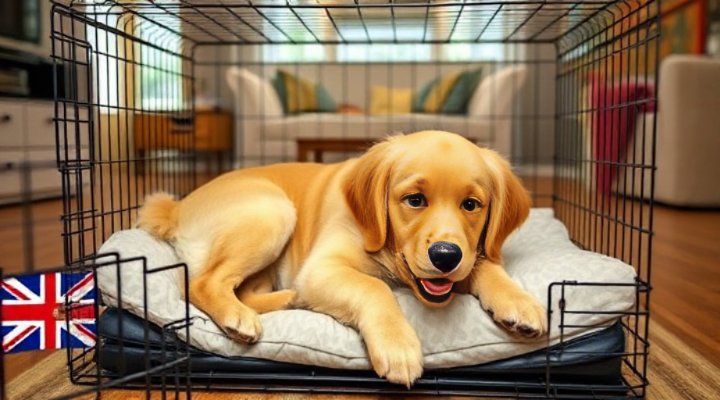Dog crate training is one of the most valuable skills you can teach your canine companion. When done correctly, it creates a safe haven for your dog while helping with behavior management and travel safety. In this comprehensive guide, we’ll explore scientifically-proven methods to make crate training a positive experience for both you and your pet.

Why Dog Crate Training Matters
First and foremost, crate training taps into your dog’s natural denning instinct. Wild canines seek out small, enclosed spaces for security and rest. By providing a properly sized crate, you’re giving your dog their own personal retreat. Moreover, as noted in our article on Dog Behavior Modification, crate training can significantly help with separation anxiety and destructive behaviors.
According to the American Veterinary Medical Association, crate training is particularly beneficial for:
- Housebreaking puppies
- Preventing destructive behaviors when unsupervised
- Creating a safe space during travel
- Providing security during stressful situations

Choosing the Right Crate
Selecting the appropriate crate is the foundation of successful dog crate training. The crate should be large enough for your dog to stand, turn around, and lie down comfortably, but not so large that they can use one end as a bathroom. For growing puppies, consider a crate with dividers or check out our guide on Best Way to Crate Train a Puppy.
Main types of crates include:
- Wire crates – offer excellent ventilation and visibility
- Plastic crates – more enclosed, better for travel
- Soft-sided crates – lightweight but less durable
- Furniture-style crates – blend with home decor

Step-by-Step Crate Training Process
1. Introduction Phase
Begin by placing the crate in a common area with the door open. Sprinkle treats inside to encourage exploration. Never force your dog inside – let them enter voluntarily. This positive association is crucial, as emphasized in our Positive Reinforcement Dog Training article.
2. Meals in the Crate
Start feeding your dog their meals near the crate, gradually moving the bowl further inside. Eventually, place the bowl at the back so your dog enters completely.
3. Increasing Duration
Once your dog is comfortable entering the crate, begin closing the door for short periods while you’re present. Gradually increase the time, always rewarding calm behavior.
4. Alone Time Training
Begin leaving the room for brief periods, returning before your dog becomes anxious. The American Kennel Club recommends this gradual approach to prevent separation anxiety.

Common Crate Training Mistakes to Avoid
While dog crate training is highly beneficial, certain mistakes can undermine your efforts:
- Using the crate as punishment
- Leaving your dog crated too long
- Ignoring signs of distress
- Choosing the wrong crate size
- Rushing the training process
Remember, as we discuss in Crate Training for Dogs: A Safe and Comfortable Guide, patience and consistency are key.
Advanced Crate Training Tips
Once your dog is comfortable with basic crate training, consider these advanced techniques:
- Practice crate commands like “kennel up”
- Use the crate during mealtimes for quiet eating
- Incorporate crate time into your daily routine
- Gradually introduce crate time in different locations
For dogs who will travel frequently, our Dog Training: A Complete Guide offers additional travel-specific tips.
Conclusion
Dog crate training, when done properly, provides numerous benefits for both dogs and owners. It creates a safe space, aids in behavior management, and makes travel safer. Remember that every dog learns at their own pace – what works for one may need adjustment for another. With patience, consistency, and positive reinforcement, your dog will soon view their crate as a comforting retreat rather than confinement.
Related Keywords: dog crate training tips, how to crate train a puppy, best dog crates for training, crate training schedule, dog behavior management techniques

